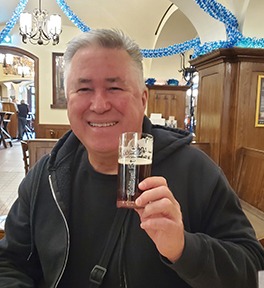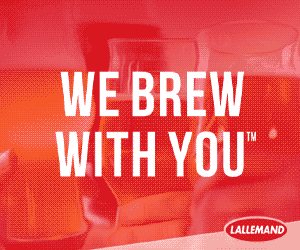Using Barrel Alternatives
If you don’t have a barrel but want to brew oak-aged beer, barrel alternatives are great options, as these two experts share.

Jamil Zainasheff is an award-winning brewer, author, beer judge, and podcaster.
I have used granules, chips, cubes, sticks, spirals, staves, as well as small and large barrels. There are even extracts that you can use to dose a beer. Generally, the smaller the format of the wood (e.g., granules versus cubes) means more surface area in contact with the beer and quicker extraction. While quicker extraction might be useful in some circumstances, more important is the quality of the wood and the quality of the process used to make it. My favorite is spirals from The Barrel Mill, which I have used extensively. This format is easy to use and much easier to remove from the beer when done. Spirals come in various lengths and they are easy to break into shorter pieces if needed.
In general, American oak has a bolder flavor with more vanilla notes. French oak has a more subtle oak flavor and an overall sweeter impression. Hungarian oak has what some consider to be smooth or more subtle vanilla notes. Regardless of the origin, those flavors of vanilla, caramel, and butter-
scotch depend on the toast or char level. Firing the wood creates melanoidins as heat from the fire breaks down carbohydrates into sugars. It is toast or char that creates flavors ranging from light vanilla to espresso and more.
My go-to favorite is a blend of light-toast American and medium toast French oak, but I also really like using Spanish cedar, cypress, sugar maple, and amburana. The only problem with some of these wood species is that they are available in limited formats.
If you are new to wood aging beer, start with higher-alcohol beers (>9% ABV), as they will not sour as quickly should there be bacteria or wild yeast introduced with the wood. Imperial stouts are always great with wood aging. The residual sweetness is a nice counterbalance to the tannins from the wood, and any vanilla and caramel notes from the wood are nice with the chocolaty notes of the stout.
I also like wood-aged Pilsner, golden ale, Kölsch, or hefeweizen with woods like Spanish cedar, cypress, sugar maple, and amburana. You can try wood with anything. Using chips or cubes, you could experiment with just a growler or Mason jar of beer to see how well a particular wood affects the flavor. If you like it, then you can age the rest of the beer.
Longer extraction times create different flavors in the beer. The general consensus is that the beers can become more tannic with longer extraction times. Taste the beer each week to see how it is progressing. Once the flavor is right, get the beer off the wood. One trick to maximize extraction and reduce waiting time is to recirculate the beer across the wood. Commercially, they use a pump, but homebrewers can swirl the vessel or invert the keg every few days to accelerate and maximize extraction.
I don’t recommend soaking oak alternatives in a spirit in hopes of replicating the flavor from a spirit barrel. The oxidation and development of flavors over time in the wood is not something you can recreate in a sealed bottle over a short time. Instead, soaking the wood in the spirit leaches out the wood flavor you want to add to your beer. You might as well just pour the spirit into the beer instead. If you do soak the wood in a spirit, then consider pouring all of that spirit into the beer too, so you retain the wood flavor. Some folks soak their wood in a spirit hoping it will kill any organisms present, but that is not a good reason to do it either. Heat, in the oven or through canning, is the best option for ensuring sanitary wood products.

Desi Hall is a sales associate with The Barrel Mill in Avon, Minnesota.
When choosing barrel alternatives, the first thing I consider is availability: Can I get these again if I like them, and how consistent is the product? I also consider volume displacement for the vessel I am using (do I have enough room to add the amount of the alternative I need to achieve the contact rate for aging?). And clean-up: How much work is it to get the alternative out of the vessel? Toast level is another consideration. Lighter toast tends to give the perception of fruit while the darker toast lends more sweet notes (caramel, butterscotch, toffee).
When you’re looking for the added flavor and complexity of a spirit along with the oak you should remember to drink the premium spirits and use a good-quality budget brand for soaking your oak alternative. Use the smallest vessel possible to soak a spiral and use only enough liquid to saturate the spiral. The goal is to add spirits to the spiral without leaving anything behind in the soaking vessel, but if there is some left behind it can be added as a liquid oak extract or tossed out.
When considering contact time, depending on the species of wood, you can achieve the desired flavor in as little as 24 hours, but in most cases four weeks will give full extraction from a spiral. Something I tell everyone that wants to use any barrel alternative is to always taste it early and taste it often. Many times brewers get bad results because they wait too long to take the first sample and end up over-oaking.
You can get the oak and spirit flavors from alternatives, but the thing you don’t get compared to a barrel is oxygenation. Oxygen has a large effect on the final taste, aroma, and mouthfeel of the finished beverage. There has been a lot of experimentation around micro-oxygenation, and by forcing oxygen into the solution we can get much closer to resembling a barrel.
Of course, barrel alternatives go beyond oak. One of my favorite combinations currently is a pale ale aged on Spanish cedar. The Spanish cedar adds notes of citrus, grapefruit peel, and a light spice.



